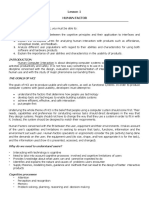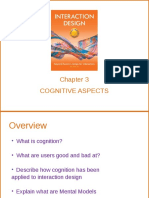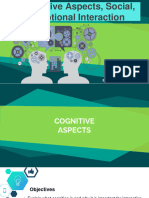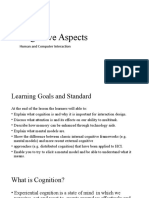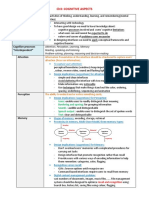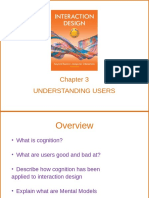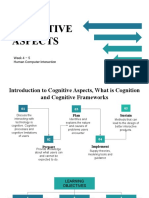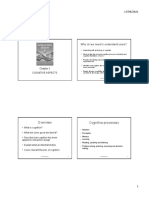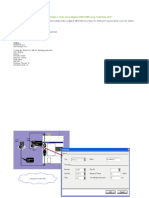0% found this document useful (0 votes)
37 views57 pagesChapter3 Understanding User
Chapter 3 focuses on understanding users in the context of interaction design, emphasizing the importance of cognition, attention, memory, and social interaction. It discusses cognitive processes that affect user behavior and decision-making, highlighting design implications for enhancing user experience. The chapter also explores cognitive frameworks, including mental models and external cognition, to improve the design of interactive products.
Uploaded by
Chen DishanCopyright
© © All Rights Reserved
We take content rights seriously. If you suspect this is your content, claim it here.
Available Formats
Download as PPTX, PDF, TXT or read online on Scribd
0% found this document useful (0 votes)
37 views57 pagesChapter3 Understanding User
Chapter 3 focuses on understanding users in the context of interaction design, emphasizing the importance of cognition, attention, memory, and social interaction. It discusses cognitive processes that affect user behavior and decision-making, highlighting design implications for enhancing user experience. The chapter also explores cognitive frameworks, including mental models and external cognition, to improve the design of interactive products.
Uploaded by
Chen DishanCopyright
© © All Rights Reserved
We take content rights seriously. If you suspect this is your content, claim it here.
Available Formats
Download as PPTX, PDF, TXT or read online on Scribd
/ 57






